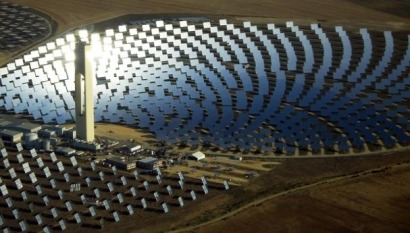
The IEA is to publish a new report on the renewable energy market, which the Agency acknowledges is “now the fastest growing sector of the energy mix and accounts for almost a fifth of all electricity produced worldwide”. It will join annual medium-term reports on oil, gas and coal, which the IEA already produces.
"A portfolio of renewable energy technologies is becoming competitive in an increasing range of circumstances and countries," IEA Executive Director Maria van der Hoeven said in Berlin where she was presenting the recent IEA publication, Deploying Renewables 2011: Best and Future Policy Practice to German policy makers. However, Ms van der Hoeven stressed that "significant policy effort, combined with continued economic incentives, is still needed to push a large portfolio of these technologies toward full competitiveness."
The Medium-Term Renewable Energy Market Report, to be published in July 2012, will include five-year projections for global renewable energy electricity capacity and generation. In so doing, it will provide an important benchmark to policymakers and the wider market for measuring developments of renewable energy.
The Medium-Term Renewable Energy Market Report will have three primary objectives:
- Address the current state of play of renewable energy;
- Assess the main drivers and barriers to deployment at country level; and
- Produce medium-term renewable energy projections through 2017.
It will consist of market analysis at the country level, an outlook for renewable energy technologies and their associated manufacturing, and an examination of global renewable energy finance.
In order to prepare this report, in-depth country analysis is being undertaken of key markets and technology-specific drivers and barriers. (These barriers may include economic issues, such as costs compared with fossil fuels, and non-economic issues, including government policies).
As well as employing data that is internally generated and sent from government departments, the IEA is also in contact with over 100 companies and organisations which are sourcing detailed market, cost and performance insights on renewable energy technologies. This additional valuable information from industry - at a time when the renewable energy market is rapidly changing - will help the IEA to access the most current views and data available.
“With this report, renewable energy takes its rightful seat at the table alongside the other major energy sources,” said the IEA in a press statement.
Offshore wind is “recession-busting”
The IEA was prompted to publish the new report given the renewable energy sectors spectacular growth, even despite the financial crisis and recession. This “recession busting” growth has also been reflected in a recently published mid-term review of the European Energy Programme for Recovery, which has found that offshore wind energy is the strongest performer of the three areas selected for funding in terms of investment, creating jobs and putting investment in place quickly.
The €4 billion European Energy Programme for Recovery (EEPR) was launched in 2009 in response to the economic crisis and the need to meet EU energy policy objectives. Three areas – offshore wind energy, gas and electricity infrastructure projects and carbon capture and storage (CCS) – were selected for funding.
Ten times the jobs of CCS
Vilma Radvilaite, Regulatory Affairs Advisor at EWEA said: "Offshore wind energy was allocated the smallest amount of funding (€565 million or 14% of the total) and yet it has created ten times more jobs than CCS projects. Since 2009, a total of 4,000 jobs have been created in offshore wind projects financed under the EEPR compared to 400 in CCS, despite CCS being allocated nearly double (€1,050 million) the amount allotted to
"It shows that wind energy projects are an ideal way to stimulate economic growth and create jobs while at the same time reducing greenhouse gas emissions, and improving our energy security. Investment in the wind power sector should be recognised as a way to restore Europe's economy to health. This report shows that stable legislative frameworks to promote the development of the wind industry should be maintained and enhanced, even in times of austerity," Radvilaite added.
Under the €4 billion EEPR, 44 gas and electricity infrastructure projects, nine offshore wind energy projects and six CCS projects received funding.
For additional information:

